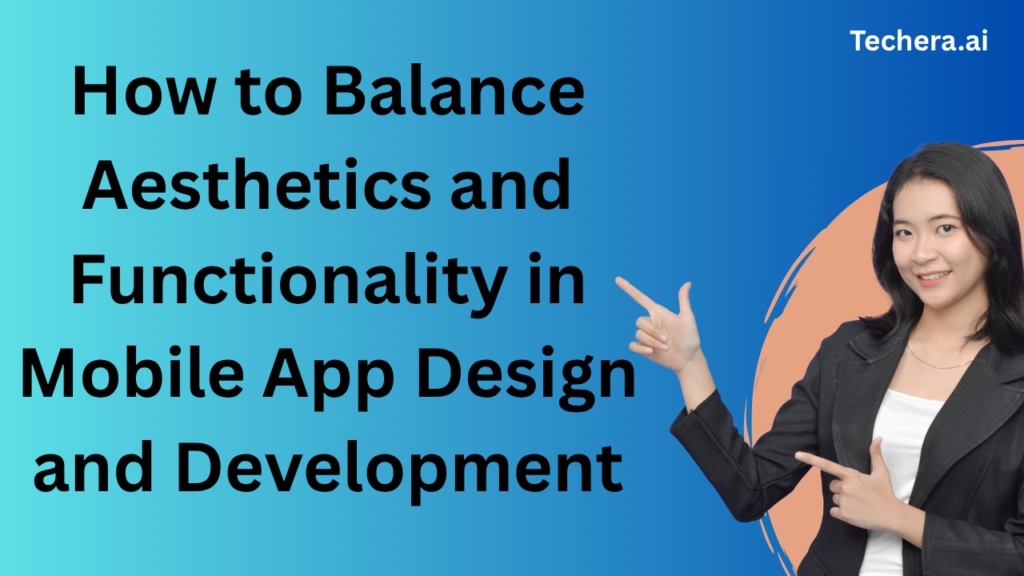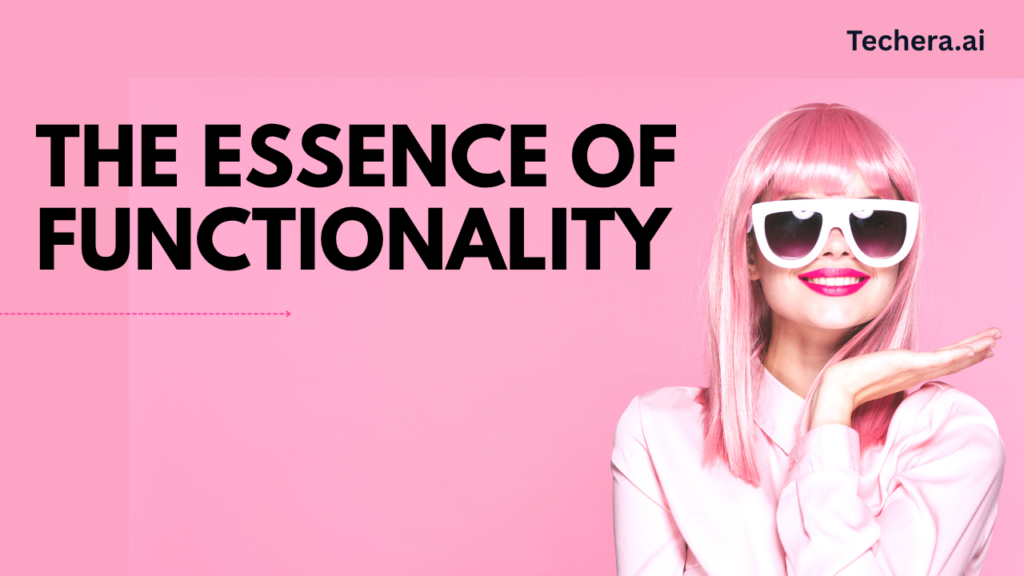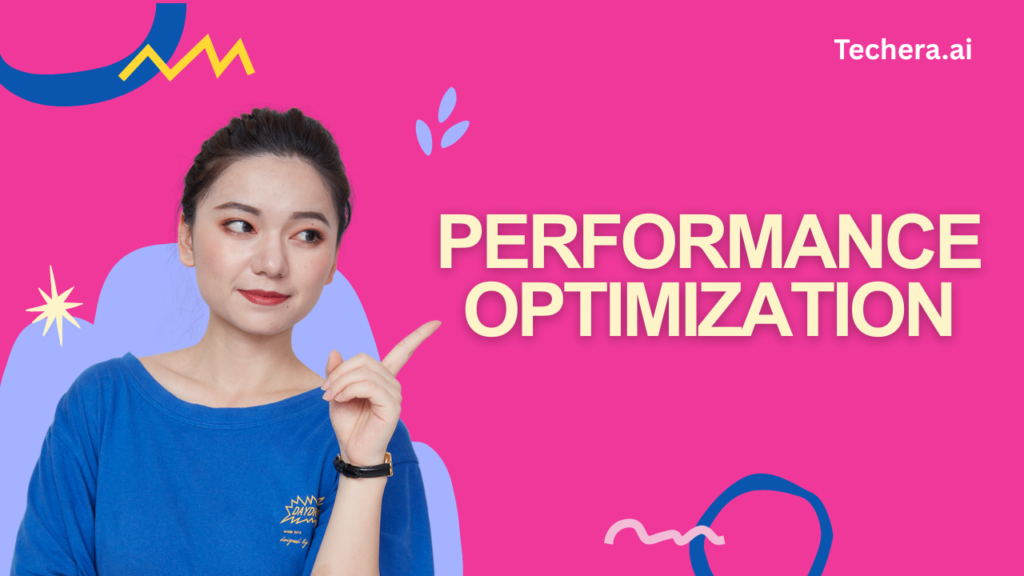
Mobile app design and development thrives when aesthetics and functionality work hand-in-hand, creating apps that look visually appealing and deliver effortless usability. By adopting minimalist design, prioritizing intuitive user flows, iterating with feedback, and ensuring efficient performance, developers can produce apps that engage users while supporting core tasks seamlessly. Focus keyword: Mobile app design and development.
Introduction
In the world of Mobile App Design and Development, a stunning design might catch attention—but seamless functionality keeps users coming back. Striking a balance between aesthetics and usability is the secret sauce behind every successful app. Whether you’re building a new app or revamping an old one, mastering this balance ensures your app not only looks great but performs even better.
Understanding Aesthetics in Mobile App Design and Development
Aesthetics refer to the visual appeal of your app—the colors, typography, animations, and layout that make it attractive.
What Makes an App Visually Appealing
A beautiful Mobile App Design and Development instantly builds credibility. Color palettes, iconography, and spacing play major roles in creating a pleasing interface. Clean lines and intuitive Mobile app design and development help users feel comfortable and engaged.
Role of Color, Typography, and Layout
- Colors evoke emotions—blue builds trust, red creates urgency.
- Typography ensures readability and brand personality.
- Layouts guide users naturally through the content.
A well-designed aesthetic should make the experience effortless, not distracting.
The Essence of Functionality

Functionality ensures the app works smoothly, delivering on its core purpose.
What Defines Functionality
It’s all about usability, performance, and problem-solving. The best-looking app is useless if users can’t complete simple actions like signing in or checking out.
User Flow and Intuitive Navigation
Smooth navigation keeps users happy. Buttons should be where users expect them to be, and every action should feel natural. Think of functionality as the backbone holding your design together.The Importance of a Balanced Design
Why balance? Because an app that’s all style and no substance won’t last long.
When Beauty Meets Usability
The perfect app merges emotional connection with efficiency. Users love designs that are intuitive yet inspiring.
Also read Mobile App Design and Development for Startups: A Step-by-Step Approach
How Imbalance Affects Experience
Too much focus on visuals can cause slow load times, while overemphasis on function might lead to a dull, lifeless interface. Balance creates harmony.
The User-Centric Approach
Before you Mobile app design and development, understand who you’re designing for.
Understanding User Behavior
Analyze user data and behavior patterns. Are they casual users or power users? Do they prefer visuals or simplicity?
Empathy-Driven Design
Putting yourself in the user’s shoes helps you create meaningful experiences that look and feel right.
Principles of Good Aesthetic Design
Visual Hierarchy
Guide the user’s eye. Use size, color, and contrast to emphasize what’s most important.
Consistency
Keep fonts, colors, and icons uniform across the app. Familiarity breeds trust.
Simplicity
Clutter kills usability. Each visual element should serve a purpose.Principles of Strong Functionality
Seamless Navigation
Menus should be intuitive, and screens should load instantly. Every click should lead users closer to their goal.
Performance
Fast, smooth transitions and responsive layouts enhance user satisfaction.
Accessibility
Include features like voice commands, larger text options, and colorblind-friendly palettes. Accessibility is functionality for everyone.
Finding the Sweet Spot: Design vs. Function
The 80/20 Rule
Focus 80% on usability and 20% on visual flair. Great visuals enhance usability—they don’t overshadow it.
Prioritizing Features
Avoid feature overload. Each added function should solve a real user need.
UI/UX Collaboration: The Perfect Duo
Design and Development Unity
UI (User Interface) is the look; UX (User Experience) is the feel. Successful apps need both in sync.
Bridging Creativity and Execution
Designers and developers should collaborate from the start to ensure that creativity aligns with technical reality.
The Role of Prototyping and Testing
Why Wireframes Matter
Wireframes are your blueprint. They allow you to visualize functionality before finalizing visuals.
Gathering Feedback
Early user testing helps identify friction points and design flaws before launch.
Minimalism: The Key to Balance
Less Is More
Minimalist design strips away distractions, focusing on core features that users need.
Examples of Minimal Yet Functional Apps
- Instagram: Simple navigation, bold visuals.
- Google Maps: Clean interface, powerful functionality.
Minimalism keeps users focused and engaged.
Performance Optimization

Lightweight Design
Large images, heavy animations, and unoptimized code slow Mobile app design and development down. Keep it light.
Responsive Layouts
Design for all devices and screen sizes. A responsive design is both beautiful and functional.
Accessibility: Beauty That Everyone Can Use
Designing for Inclusivity
Ensure your app works for people with disabilities. Use contrasting colors, readable fonts, and clear audio cues.
Universal Usability
Accessibility ensures everyone—regardless of ability—can enjoy your app equally.
Real-World Examples of Perfect Balance
Airbnb
Clean visuals with seamless booking functionality.
Spotify
Minimal interface with smart, personalized playlists.
Simple design, flawless performance—proof that beauty lies in simplicity.
Common Mistakes to Avoid
- Overcomplicating the design
- Ignoring load times
- Forgetting accessibility
- Skipping usability testing
- Adding unnecessary animations
Future Trends in Balanced App Design
Adaptive Interfaces
AI-driven designs will adjust automatically based on user preferences and behavior.
Emotion-Based UX
Future apps may detect user emotions through gestures and tailor the experience in real time.
Conclusion
Balancing aesthetics and functionality is like walking a tightrope—you need precision, empathy, and focus. A truly successful app doesn’t just look beautiful; it performs beautifully. Always Mobile App Design and Development for the user first, letting form and function work hand in hand to create unforgettable experiences.
FAQs
1. What’s more important, aesthetics or functionality?
Functionality comes first, but aesthetics enhance the experience. The best apps combine both.
2. How do I test if my app is user-friendly?
Use usability testing tools like Hotjar or UserTesting to gather real feedback.
3. Can minimal design still be engaging?
Absolutely. Minimal design keeps users focused on what truly matters.
4. What tools can help balance design and function?
Figma, Adobe XD, and InVision are great for collaborative design and prototyping.
5. How can I improve app performance without sacrificing visuals?
Optimize images, compress files, and use lightweight animations for smoother performance.

